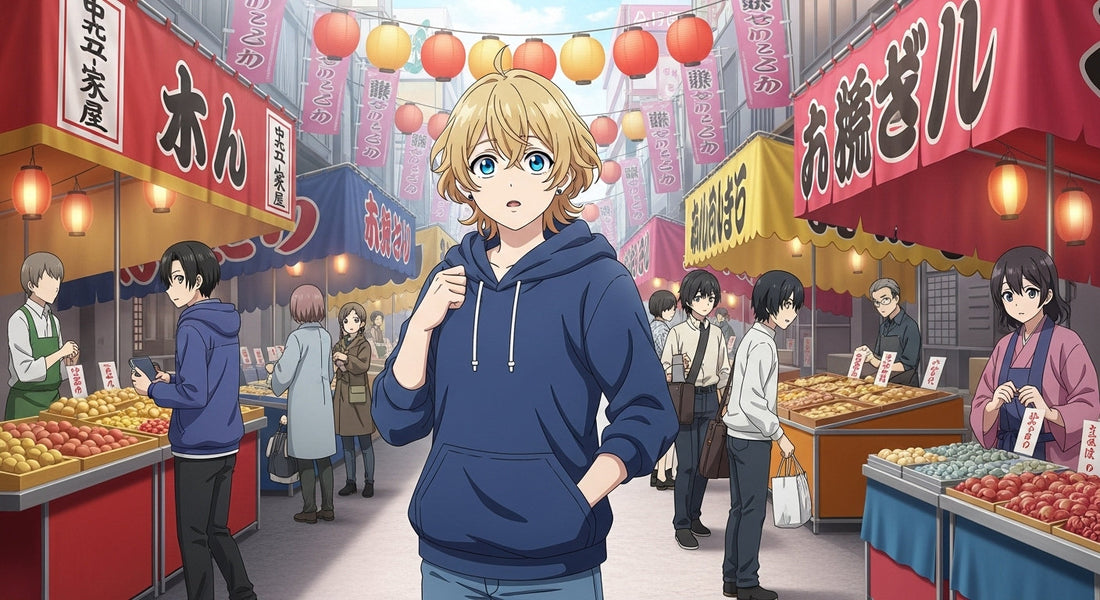
The 25 Most Iconic Japanese Phrases Used in Anime (and What They Really Mean)
Ever found yourself pausing anime just to Google that catchy phrase you keep hearing? Whether you’re a new fan or a seasoned otaku, understanding the most common Japanese phrases used in anime can make your viewing experience richer and more enjoyable. Let’s dive into this fascinating lingo and see just how much you already recognize!
Why The Language of Anime Matters
Anime is more than animation—it’s a gateway to Japanese culture, expressions, and unique ways of thinking. When characters shout “Nani?!” or greet each other with “Ohayou!” they aren’t just speaking Japanese, but conveying emotions, relationships, and context through phrases that sometimes don’t translate directly. Recognizing these lines can help you:
- Catch hidden layers of meaning.
- Anticipate plot twists and jokes.
- Feel more connected with Japanese culture.
- Enjoy watching without subtitles as your skills grow.
Essential Japanese Phrases Used in Anime
Some expressions are so universal in anime that you’ll hear them in nearly every series, regardless of genre. These core phrases are foundational for anyone watching Japanese shows.
1. “Nani?” (なに?) – “What?”
You’ll hear this exclaimed whenever a character is caught off guard or confused. It’s memorable for its sharp delivery and is often drawn out for dramatic (or comic) effect.
2. “Baka!” (ばか) – “Idiot!” or “Fool!”
A staple, especially in comedies and Tsundere character banter. It runs the gamut from playful teasing to a genuine insult, depending on tone and context.
3. “Sugoi!” (すごい) – “Amazing!” or “Awesome!”
Excitement, awe, or even sarcasm—all can be captured in this single word, shouted during athletic feats, epic magic, or delicious meals.
4. “Arigatou” (ありがとう) – “Thank you”
From heartfelt gratitude to hurried thanks, you’ll hear this in every genre. Watch for variations such as “Arigatou gozaimasu” (more formal) or “Arigatou ne” (casual).
5. “Yamete!” (やめて!) – “Stop!”
The iconic plea that pops up in dramatic scenes—think battles, bullying, or a prank going too far. Variations include “Yamete kudasai” for added politeness.
6. “Ohayou!” (おはよう) – “Good morning!”
A cheerful greeting among friends, with the more formal “Ohayou gozaimasu” often heard at school or the workplace.
7. “Daijoubu?” (大丈夫?) – “Are you okay?”
Characters use this to check on each other after a fall, injury, or emotional moment. It’s a sign of empathy, often with a soft or concerned tone.
8. “Kawaii!” (かわいい) – “Cute!”
From chibi pets to adorable side characters, this is the universal reaction to anything irresistibly charming or sweet.
Delving Deeper: Dialogue That Defines Characters
Anime’s Japanese phrases aren’t just filler; they can reveal character traits, relationships, and story tension. Here’s a closer look at lines you’ll spot in both everyday and intense scenes.
9. “Ikuzo!” (行くぞ!) / “Ikimashou!” (行きましょう!) – “Let’s go!”
Used as a rallying cry before heading into battle, an adventure, or just a shopping trip. The more formal “Ikimashou” is polite; “Ikuzo” is casual and spirited.
10. “Tasukete!” (助けて!) – “Help!”
instantly signals distress and urgency. Expect it during kidnapping scenes or when a character bites off more than they can chew.
11. “Urusai!” (うるさい!) – “Shut up!” or “You’re noisy!”
Whether the cast is bickering or a lone hero is overwhelmed, this phrase sets the tone for annoyance.
12. “Gomen!” (ごめん) / “Gomen nasai” (ごめんなさい) – “Sorry”
Emotions run high in anime, and apologies are frequent. The short “Gomen!” is informal; “Gomen nasai” is heartfelt and polite.
13. “Uso!” (うそ!) – “No way!” or “You’re kidding!”
Perfect for shocked reactions, revealing plot twists, or moments of disbelief.
14. “Ganbatte!” (頑張って!) – “Do your best!” or “Good luck!”
Encouragement, motivation, and heartfelt support packed into one key phrase. Expect it before exams, competitions, or a big confession.
15. “Sayonara” (さよなら) – “Goodbye”
Often reserved for more final or bittersweet farewells (less common in daily hellos or partings among friends).
Relationship-Based Japanese Phrases
How anime characters address each other reveals underlying dynamics—family, friends, lovers, rivals. Different honorifics and stated relationships are a big part of Japanese phrases used in anime.
16. Character Titles: “Senpai,” “Kouhai,” “Sensei,” “San,” “Chan,” “Kun”
- “Senpai” (先輩): Refers to an upperclassman or respected senior.
- “Kouhai” (後輩): A junior or underclassman.
- “Sensei” (先生): Teacher, mentor, or expert.
- “San” (さん): Neutral, polite suffix for names.
- “Chan” (ちゃん): Affectionate, typically used for girls, close friends, or children.
- “Kun” (くん): Friendly, mostly for boys or younger men.
Listen for these tags after names to catch how close (or distant) characters are.
17. “Onii-chan,” “Onee-san” (お兄ちゃん / お姉さん) – “Big Brother / Sister”
Shows up constantly in family-themed or slice-of-life anime, signaling sibling relationships or affection.
18. “Nakama” (仲間) – “Comrade,” “Friend,” or “Team”
More than just “friend,” this word suggests belonging and bonds forged through shared trials, famously echoed in shounen anime like One Piece.
Battle Cries and Signature Phrases
Shonen and action anime boast catchphrases that become instantly associated with their characters—think of them as verbal trademarks.
19. “Ore wa…!” / “Watashi wa…” (俺は… / 私は…) – “I am…”
Characters often announce themselves before major moments, introducing their name or intention with “Ore wa” (masculine/casual) or “Watashi wa” (gender-neutral/polite).
20. “Yatta!” (やった!) – “I did it!” or “Yay!”
Triumphant exclamation for victories big or small, from passing a test to saving the world.
21. “Shinjiru” (信じる) / “Shinjite” (信じて) – “Believe” / “Believe me”
Themes of trust and self-confidence fill anime, often summed up when characters urge each other to “believe!”
22. “Kisama!” (貴様) – “You (derogatory)”
A harsh term for enemies that ramps up tension—you’ll spot it in confrontations and rivalries.
23. “Dame!” (だめ!) – “No!” or “Don’t!”
Can signal something forbidden, dangerous, or just disapproved by the speaker.
24. “Mou!” (もう!) – “Geez!” or “Come on!”
An exasperated sigh, used often by annoyed or flustered characters, especially those with Tsundere traits.
Anime-Specific Japanese Phrases and Pop Culture Words
Some Japanese phrases used in anime have become so famous that fans around the world use them, even in cosplay or online fandoms.
25. “Itadakimasu!” (いただきます!) – “Let’s eat!” (Literally: “I humbly receive”)
Before meals, characters often clap their hands and say “Itadakimasu!”—a word reflecting gratitude for food and those who prepared it.
Popular Sound Effects
Anime is filled with sound-effect words known as onomatopoeia, such as:
- “Doki doki” (the sound of a pounding heart),
- “Giri giri” (something at its limit),
- “Waku waku” (excitement).
These add layers of emotion beyond literal translation.
How to Recognize, Learn, and Use Japanese Phrases Used in Anime
Want to go from passive listener to active learner? Here are practical tips:
- Watch with subtitles first, then without: This reinforces both the natural Japanese phrasing and the English meaning.
- Repeat key phrases aloud: Mimicking pronunciation cements words in memory.
- Take notes: Jotting down new words as you watch makes review easier.
- Use anime phrasebooks or mobile apps: Some resources focus specifically on Japanese phrases used in anime, highlighting their real versus dramatic meanings.
- Join fan communities: Forums, Discord servers, or social media groups can offer explanations, memes, and practice.
Who Benefits Most From Learning Japanese Phrases Used in Anime?
- Anime enthusiasts: Deepen your enjoyment and connect with subtleties, running jokes, and character quirks.
- Language learners: Phrases in anime introduce Japanese in an engaging, memorable context—more fun than textbooks alone.
- Cosplayers and content creators: Authentic speech completes any performance, script, or fan work.
- Travelers to Japan: Common greetings, thanks, and small talk from anime can be surprisingly useful.
- Pop culture fans: Spotting these phrases in memes or conventions showcases your insider knowledge.
Cautions: Are Japanese Phrases Used in Anime Always Realistic?
It’s important to note: while anime phrases boost understanding, not all expressions are suitable in real-life conversation. Nuances matter:
- Some words are melodramatic, exaggerated, or specific to certain gender roles and anime settings.
- Phrases like “kisama!” are very rude in real Japanese society, acceptable only within the world of fiction.
- The use of honorifics, titles, and even “baka!” can offend if not used correctly.
When in doubt, stick to neutral words like “arigatou,” “sumimasen” (excuse me/sorry), and “konnichiwa” (hello).
Practical Ways to Use Your New Vocabulary
After you start recognizing Japanese phrases used in anime, here are ways to apply your knowledge:
- Chat with fellow fans: Toss “Yatta!” into a conversation when something goes right.
- Role-play or voice acting practice: Try using “Baka!” or “Daijoubu?” in character to get comfortable with delivery.
- Travel preparedness: Use greetings like “Ohayou gozaimasu” and polite addresses like “san.”
- Social media posts and memes: Hashtags like #itadakimasu or #kawaii tie your fandom into a wider community.
- Language exchange: Surprise Japanese friends with appropriate, context-aware phrases you learned from anime.
FAQ: Your Questions About Japanese Phrases Used in Anime
Q: Are anime phrases a good way to learn Japanese?
A: They’re a fun entry point, especially for improving listening and pronunciation. Just supplement with formal study to learn grammar, polite forms, and context.
Q: Why do some phrases sound different for men and women?
A: Japanese speech often reflects social identity. Anime exaggerates these differences for characterization, so listen for masculine forms like “ore wa” versus feminine “watashi wa.”
Q: What’s the difference between “Baka” and “Aho”?
A: Both mean “idiot,” but “baka” is standard and often playful in anime, while “aho” is harsher and more regionally used (e.g., in Kansai dialect).
Q: Can I use honorifics like “-sama” or “-chan” with Japanese people I just met?
A: It’s better to avoid them until you understand the context. Anime sometimes plays loosely with social hierarchy for humor or drama.
Conclusion
Mastering common Japanese phrases used in anime opens up a world of context, emotion, and insider knowledge. The next time you watch your favorite show, listen closely—your viewing experience will deepen, and you might just start picking up a bit of Japanese along the way!
Ready to try out some phrases? Jot down your favorites and listen for them in your next episode—who knows, you may be shouting “Yatta!” before you know it.
